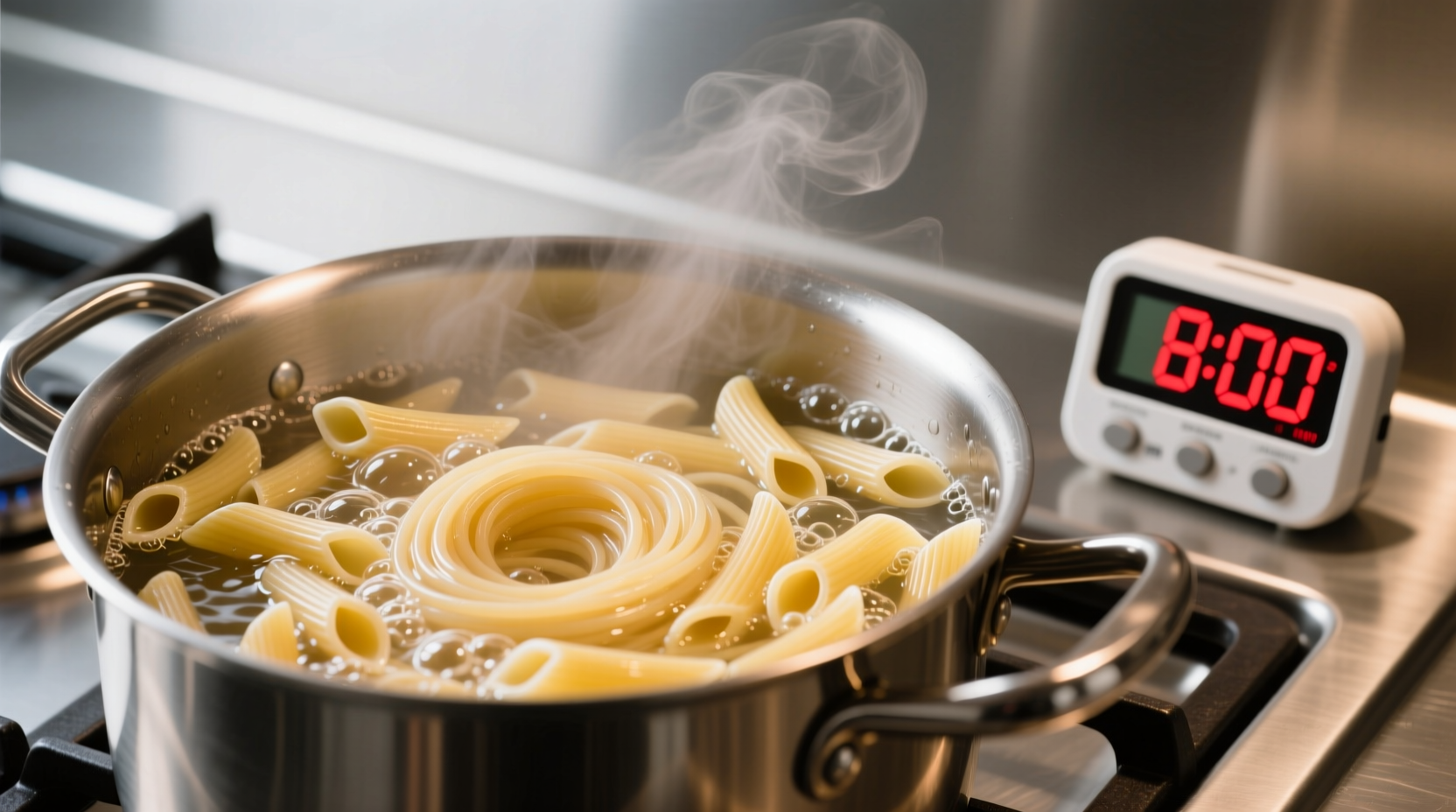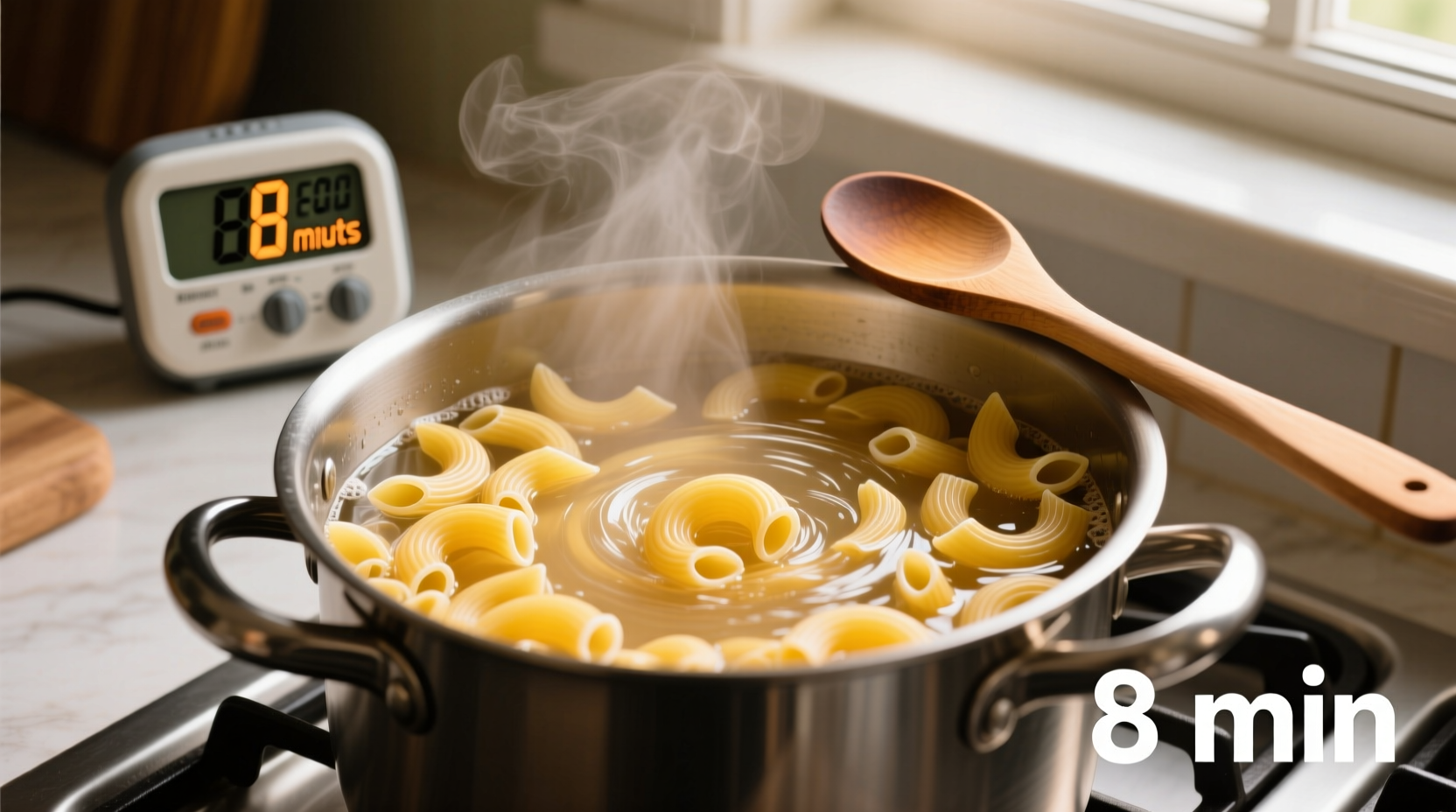Getting the cooking time right for elbow macaroni makes all the difference between a perfect side dish and a mushy mess. As a staple in American households for generations, this versatile pasta appears in everything from classic mac and cheese to hearty pasta salads. But that perfect al dente texture - tender yet with just the right bite - depends entirely on precise timing.
Why Timing Matters for Elbow Macaroni
Unlike fresh pasta, dried elbow macaroni needs precise boiling time to achieve optimal texture. Undercooked macaroni remains hard and chalky in the center, while overcooked pasta becomes unpleasantly soft and loses its shape. The 7-9 minute window represents the sweet spot where the pasta has absorbed enough water to become tender while maintaining structural integrity.
Your Step-by-Step Cooking Guide
Preparation Phase: Setting Up for Success
Before you even turn on the burner, proper preparation ensures consistent results:
- Water ratio: Use 4-6 quarts of water per pound of pasta - crowded pots lead to uneven cooking
- Salt properly: Add 1-2 tablespoons of coarse salt to the water once it reaches a rolling boil (before adding pasta)
- Equipment check: Have a slotted spoon and timer ready before you begin
Cooking Process: The Critical 7-9 Minutes
Follow these steps for foolproof results:
- Bring water to a full rolling boil before adding pasta
- Stir immediately after adding macaroni to prevent sticking
- Set timer for 7 minutes - this is your first testing point
- Maintain a gentle boil throughout cooking (not a violent rolling boil)
- Test texture starting at 7 minutes by fishing out a piece with slotted spoon
- Continue testing every 30 seconds until desired doneness
| Pasta Type | Standard Cooking Time | First Testing Point |
|---|---|---|
| Elbow Macaroni (regular) | 7-9 minutes | 7 minutes |
| Elbow Macaroni (whole wheat) | 9-11 minutes | 9 minutes |
| Elbow Macaroni (gluten-free) | 6-8 minutes | 6 minutes |
| Small Shells | 8-10 minutes | 8 minutes |
Testing for Perfect Doneness
The visual cues matter as much as the clock:
- Color change: Transitions from pale yellow to golden yellow
- Texture test: Should be tender with slight resistance in the center
- Float test: Properly cooked pieces will float briefly before sinking
- Cut test: No hard white center when cut in half

Factors That Affect Cooking Time
Several variables can shift that standard 7-9 minute window:
Altitude Adjustments
At higher elevations, water boils at lower temperatures, requiring longer cooking times:
- Sea level to 2,000 feet: Standard 7-9 minutes
- 2,000-5,000 feet: Add 1-2 minutes
- 5,000-7,000 feet: Add 2-3 minutes
- Over 7,000 feet: Add 3-4 minutes
Pasta Brand Variations
Manufacturing differences impact cooking times. According to America's Test Kitchen research, some national brands consistently cook faster than store brands due to differences in extrusion and drying processes. Always check the package instructions as your starting point.
Pro Tips for Perfect Macaroni Every Time
- Reserve pasta water: Save 1 cup before draining - the starchy water helps sauces cling better
- Don't rinse: Unless making cold pasta salad, rinsing removes the starch needed for sauce adhesion
- Finish in sauce: For best results, transfer pasta directly to sauce and cook 1-2 minutes together
- Account for carryover cooking: Pasta continues cooking after draining - remove 30 seconds before perfect
Common Mistakes to Avoid
Even experienced cooks make these timing errors:
- Adding pasta to cold water: Always start with boiling water
- Overcrowding the pot: Reduces water temperature significantly
- Not stirring initially: Causes immediate sticking at the bottom
- Guessing instead of tasting: Package times are estimates - your taste test is definitive
Serving and Storage Guidelines
Proper timing extends beyond the boiling phase:
- Immediate serving: Toss with sauce within 2 minutes of draining for best texture
- Refrigeration: Store cooked macaroni in airtight container for up to 5 days
- Reheating: Add 1-2 tablespoons water and microwave in 30-second intervals
- Freezing: Cook to slightly underdone state before freezing for best texture after thawing
Frequently Asked Questions
How do I know when elbow macaroni is perfectly cooked?
Perfectly cooked elbow macaroni should be tender with a slight firmness in the center (al dente). The best test is tasting - start checking at 7 minutes. The pasta should have transformed from its hard, brittle dry state to a flexible but resilient texture. Visually, it will change from pale yellow to a richer golden color, and properly cooked pieces will briefly float before sinking when dropped back into the water.
Can I cook elbow macaroni in less water to save time?
While possible, using less water isn't recommended. The standard ratio of 4-6 quarts per pound of pasta ensures even cooking and prevents sticking. With insufficient water, the starch concentration becomes too high, causing the pasta to cook unevenly and potentially become gummy. If you must reduce water, use at least 3 quarts per pound and stir constantly during the first two minutes of cooking.
Why does my elbow macaroni always stick together?
Macaroni sticks primarily due to three reasons: insufficient water, not stirring during the first minute of cooking, or using a pot that's too small. Always stir immediately after adding pasta to boiling water, and maintain gentle boiling throughout cooking. Adding adequate salt (1-2 tablespoons per gallon) also helps prevent sticking by strengthening the pasta's gluten structure. If cooking for a crowd, consider staggering your cooking times rather than overcrowding a single pot.
Should I add oil to the pasta water?
No, adding oil to pasta water is unnecessary and potentially counterproductive. Professional chefs and culinary experts like those at America's Test Kitchen recommend against this practice. Oil creates a barrier that prevents sauce from properly adhering to the pasta. Proper stirring during the first minute of cooking and using adequate water volume are far more effective at preventing sticking than adding oil.











 浙公网安备
33010002000092号
浙公网安备
33010002000092号 浙B2-20120091-4
浙B2-20120091-4